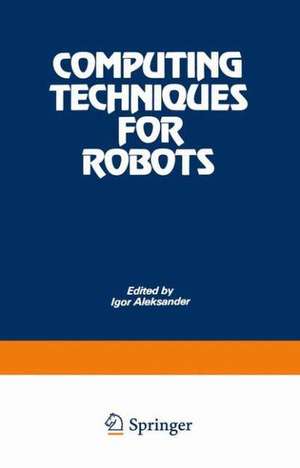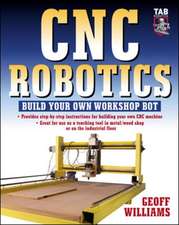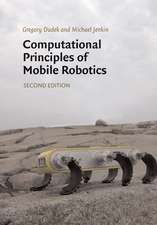Computing Techniques for Robots
Autor Igor Aleksanderen Limba Engleză Paperback – 18 ian 2014
Preț: 384.31 lei
Nou
Puncte Express: 576
Preț estimativ în valută:
73.54€ • 78.64$ • 61.31£
73.54€ • 78.64$ • 61.31£
Carte tipărită la comandă
Livrare economică 17 aprilie-01 mai
Preluare comenzi: 021 569.72.76
Specificații
ISBN-13: 9781468468632
ISBN-10: 1468468634
Pagini: 280
Ilustrații: 276 p. 29 illus.
Dimensiuni: 140 x 216 x 15 mm
Greutate: 0.33 kg
Ediția:Softcover reprint of the original 1st ed. 1985
Editura: Springer Us
Colecția Springer
Locul publicării:New York, NY, United States
ISBN-10: 1468468634
Pagini: 280
Ilustrații: 276 p. 29 illus.
Dimensiuni: 140 x 216 x 15 mm
Greutate: 0.33 kg
Ediția:Softcover reprint of the original 1st ed. 1985
Editura: Springer Us
Colecția Springer
Locul publicării:New York, NY, United States
Public țintă
ResearchCuprins
1 Introduction.- Robotic Practice 10; Exploiting Mathematics 11; Making Sense of Sensors 12; Computing for Design 13; Future Directions 14.- I: Sensor Information Processing.- 2 A method for grasping randomly oriented objects using touch sensing.- 3 Method of contour recognition.- 4 The design of sensors for a mobile teleoperator robot.- II: Mathematical Concerns.- 5 Constrained average path tracking for industrial robots.- 6 The application of spline functions to trajectory generation for computer-controlled manipulators.- 7 Kinematic equations of robot manipulators.- 8 Solution of kinematic equations for robot manipulators.- III: Practical Concerns.- 9 A strategy to achieve an assembly by means of an inaccurate, flexible robot.- 10 Trajectory planning for a multi-arm robot in an assembly task.- 11 Cooperation of two manipulators in assembly tasks.- IV: Computer Aids to Robot Design.- 12 A CAD system for programming and simulating robots’ actions.- 13 The development of a suite of programs for the analysis of mechanisms.









